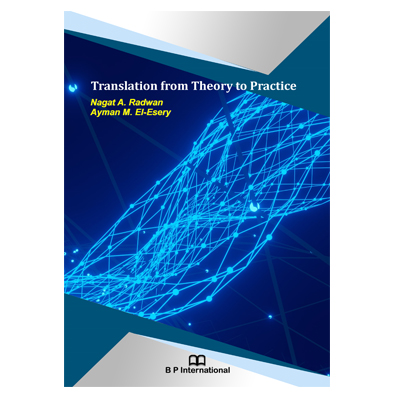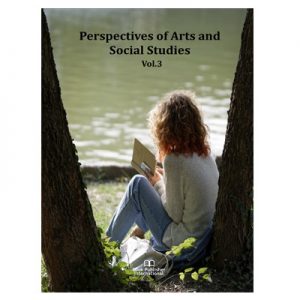Translation is necessary to surmount linguistic and cultural barriers. It is essential to enable effective intercultural communication among people from different cultures. It is conducted at almost any given moment, not only for literary works but for all aspects of life all over the world. Thus, it goes on at all circuit points: in network communications, in international press agencies, in various departments of newspapers, and at radio and television stations, in diplomatic missions and governments of all countries, in international conferences, among border and customs authorities, in export and import firms, in administrative offices, in film studios, and in all international means of transportation. It takes place almost everywhere and has become an integral part of modern life. Thus, translation is indispensable as it constitutes an important means of communication and cultural transmission as well as a technique for language learning. It is also worth being aware that translation is likely to have been taking place for as long as languages have been written down.
However, translation is not an easy task—even its definitions differ according to the different perspectives of translation theories. Some theorists define it as an art or a science, which was a great debate between theorists in the 20th century. Others consider it as either a process or a product. Thus, some theorists concern translation as a process to inspect what is going on in the minds of translators. On the other hand, some theorists are more interested in translation as a product to criticize the translated texts according to certain rules and norms that presupposed to be followed by translators. Some definitions consider translation as a skill or a cognitive activity that should be mastered through training and studying its varied fields. Others tackle its relation to culture, communication, and linguistics that influence and be influenced by different societies and cultures.
In all cases, theorists assure that translation is not considered as a branch of language that should be included in linguistic courses anymore. It is rather a field of study that requires more than proficiency in two languages. It demands mastering what is behind these languages and cultures. It necessitates being skillful in varied domains according to the fields of translation that one intends to conquer.
No doubt that it is inevitable to master the two languages in order to be a proficient translator. However, it is crucial as well to know about the varied fields of translation to be able to understand the texts to be translated. In addition, it is substantial to master the cultural aspects of the two languages in order to be able to understand the imbedded meanings behind the texts in these languages. All these competencies demand studying translation process and learn how to be a proficient translator.
Hence, translation requires not only a lot of skills but also sustainable training as well. Even in the linguistic domain, one needs excessive training to be a professional translator. Thus, since there is no absolute synonymy between words in the same language, it is not strange to discover a lack of synonymy between different languages. Translators need to be familiar with these barriers in translation and learn new strategies to overcome the difficulties they may encounter in translation.
To sum up, translators’ journey from beginners to professionals requires training on developing their knowledge of the varied fields of translation, using translation strategies to overcome the problems of translation, and mastering achieving cohesion and coherence of the translated texts. Therefore, the present book handles different translation problems from different perspectives of translation studies, trying to give translators some aid to master translation skills and produce an acceptable translation.
The present book is dedicated to translation students and trainees. The book tackles translation as a process. The book proposes a four-step model for the translation process based on translation theories and schema theory. This model was designed by the authors of the book and is called the Schema-Based Translation Model (SBTM). It offers guidelines upon which translation practicing programs may be based. It also may be used to develop basic translation skills. The book includes five chapters.
Chapter one handles the main criteria of acceptable translation, the importance of teaching translation, and the main stages of the translation process proposed by the authors. These criteria were set based on different rules according to the authors’ experiences in translation studies.
Chapter two concerns the relationship between schema and translation. As the first step in the translating process is comprehension, this chapter concentrates on how translators can make the best use of schema activation in translation. It discusses the importance of schema activation in understanding the source text in order to be able to get the core meaning of the original text and convey it into the target language.
Chapter three aims to help translators to overcome some problems of the source text and its heavy styles. This chapter aims to enhance the translator’s ability to understand, maintain, and use translation strategies during translation from English into Arabic and vice versa. The chapter offers strategies on word level, sentence level, and text level. It introduces the problems that a translator may encounter in translation process and how to solve them giving examples for each problem and suitable applied strategy.
The main aim of chapter four is to train translators to write the first draft of a translation, paying close attention to the differences between the two languages—the source language and the target one—either cultural, structural, or linguistic differences. This chapter considers the differences between the source language and the target language and how to write the conceived meaning of the source text in the target language according to its rules without interfering with the source language.
The main aim of chapter five is to train translators to make the necessary changes and correct mistakes in the first draft. Translators have to revise the translation draft and conduct the necessary modifications in the target text. This stage includes correcting and reordering to maintain coherence and cohesion in the target text. This may include adding, omitting, reordering, rephrasing, rehearsing, …….etc. It all based on the convenience coherence, and acceptance of the target text.





